When it comes to upgrading your car audio system to deliver amazingly realistic performance, many people choose what’s known as a three-way front stage. In the simplest of terms, this refers to there being three speakers on each side of the vehicle. As we explained in our article about the need for different speaker sizes, your audio system requires woofers and tweeters to reproduce your music properly. The question is, why add dedicated midrange drivers to the mix? Read on to learn the answer.

The RS Series speakers from ARC Audio offer amazing performance and accuracy, combining the RS 6.0 for midbass, the RS 3.0 for midrange and the RS 1.0 tweeters.
The Source of Sound
One key advantage of using a dedicated midrange speaker with a woofer and tweeter is that the small speaker can be placed on the dash or at the top of the door. These locations can deliver the perception that the voices are coming from a point higher in the vehicle than if you were relying solely on a woofer mounted in the door. Ideally, your audio system should — when designed, installed and calibrated properly with a DSP — seem to reproduce a soundstage that spans the middle of your windshield from pillar to pillar, or beyond.
In a two-way speaker system with a woofer and a tweeter, audio frequencies below 3,500 Hz may seem to come from the doors. This causes the height of the soundstage to be stretched vertically in the vehicle, and it detracts from the sense of realism. Adding a set of midrange speakers can raise the soundstage.
Consistent Frequency Response
Every speaker in the world, from every manufacturer, experiences a phenomenon called directivity. Directivity refers to the shape of the sound being created by the speaker with respect to the frequency of the sound. Take, for example, a 6.5-inch woofer. At low frequencies, the sound created by a speaker emanates in a spherical pattern that would, if possible, extend behind the speaker itself. This characteristic is part of why the shape of the mounting surface for a speaker is so crucial to its performance.
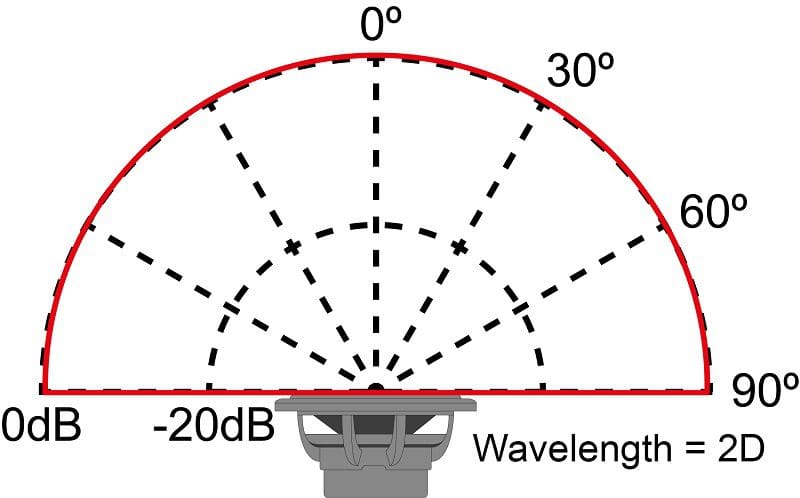
This polar response graph shows the shape of the sound created by a speaker relative to the angle of the listener. This is the radiation pattern based on frequencies with wavelengths more than twice the diameter of the cone.
As the output frequency increases, the shape of the sphere moves from being equal in a 360-degree circle around the speaker to a ball in front of the speaker. The sound created outside this ball doesn’t cease to exist, but it is definitely attenuated (quieter).
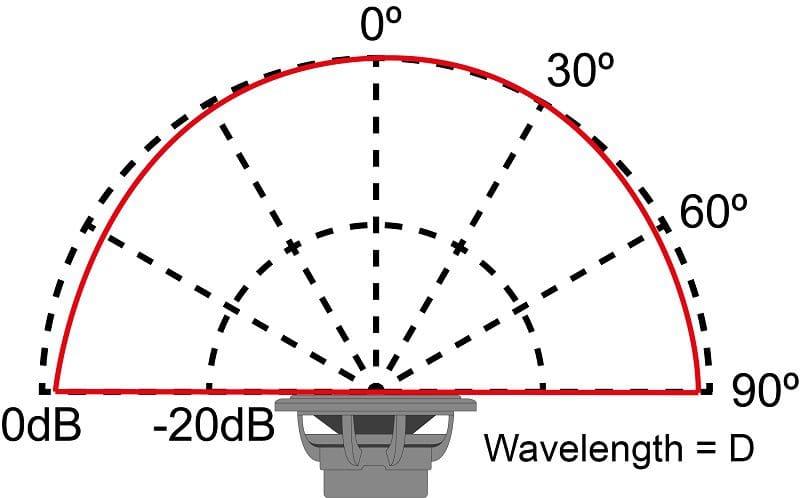
Even when the wavelength is the same as the cone diameter, the dispersion pattern remains relatively spherical, but attenuates beyond 45 degrees
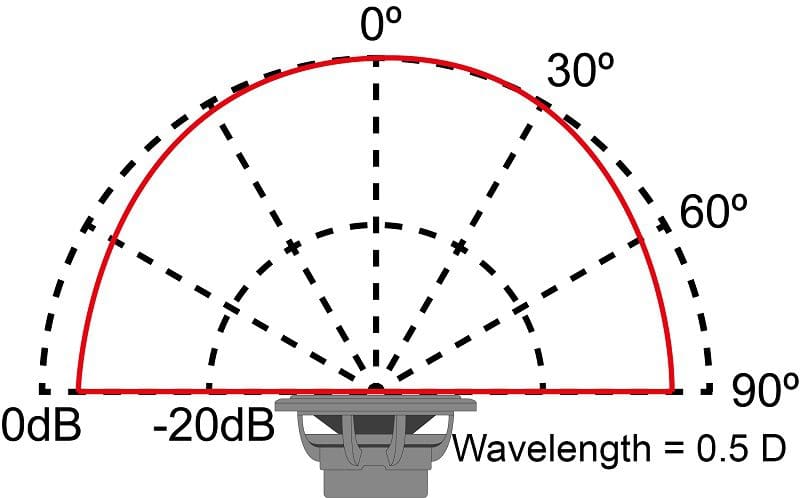
As the output frequency wavelength approaches twice the cone diameter, the dispersion pattern starts to narrow even more.
A further increase in frequency results in the ball narrowing to what would be perceived as a spotlight shape. Unless you are in front of the speaker, these audio frequencies will be quieter.
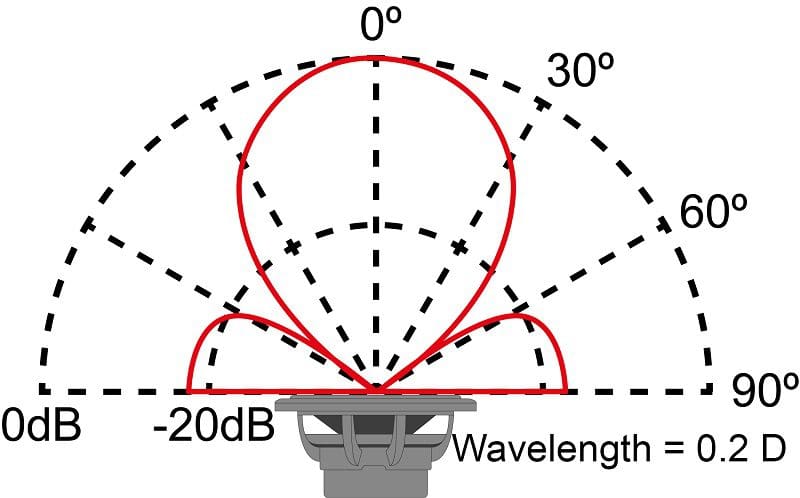
When the wavelength is one fifth of the cone diameter, the output is balloon shaped and listening off-axis may result in this high-frequency information not being audible.
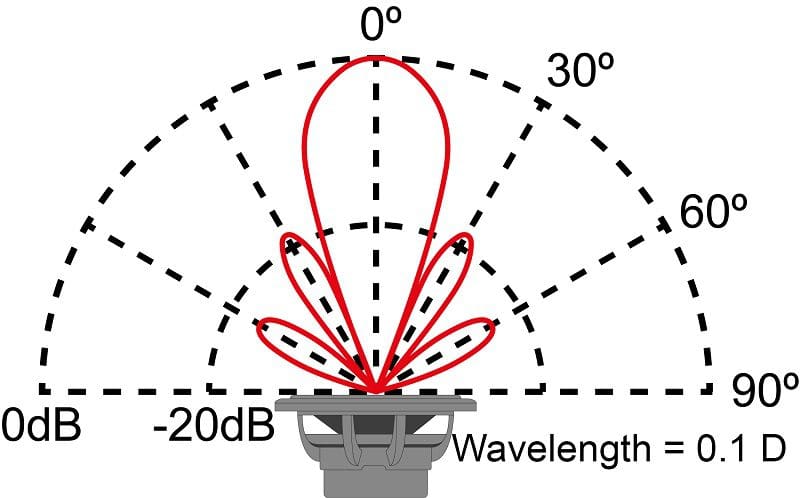
At wavelengths of one tenth of the cone diameter, the output pattern is very directional. At even 30-degree’s off-axis you will hear very little.
Directivity is an issue because, in almost every vehicle, the speakers aren’t aimed on-axis with the listener. For a door-mounted woofer, we may be at as much as a 70-degree angle. If this speaker is operated with a tweeter and filtered at 4,000 Hz, we may be sitting in a position where there is very little output.
The chart below shows, in general terms, the maximum frequency you want to use for a given size of speaker in order to maintain smooth frequency response throughout the listening environment.

For optimum performance and predictability, the upper-frequency limit for a speaker is a frequency with a wavelength that is 1.75 times the cone diameter. Put another way, you want the next speaker to be able to play low enough that this speaker’s directivity doesn’t become a problem.
Increased Low-Frequency Output
For the product specialist designing your audio system, selecting a woofer, midrange and tweeter for a three-way front stage may, depending on the brand being used, allow for a slight improvement in bass performance from the woofers. Since there’s no need for the 6.5- to 8-inch woofers to produce midrange frequencies much above 400 Hz, the cones can be a little heavier, so they play deeper than a similarly sized speaker that needs to play to 4,000 Hz.
Some companies switch from using a phase plug on their midrange drivers that play higher frequencies to adding a dust cap. The dust cap adds mass to lower the resonant frequency of the driver.
Another advantage, especially for those audio systems without a subwoofer: Your installer can turn up the output of the woofer relative to the midrange to increase bass output.
Though the image below doesn’t exactly follow the laws of physics, it shows how the output of a three-way speaker system delivers even sound distribution at the listening position.
The image below shows, in the same artistic fashion, how upper-midrange audio information from a door-mounted woofer may not be clearly audible at the listening position.
Three-Way Front Stage System Design
Many companies offer three-way speaker sets that include passive crossover. Passive crossovers allow all three speakers on each side of the vehicle to be powered by a single amplifier channel. In most cases, the crossover points are fixed with passive networks, though some do include options for midrange and tweeter output levels.
To optimize the performance of a three-way front speaker set, it’s best to use a six-channel amplifier along with a digital signal processor. The features of the processor allow your installer to fine-tune the output of each speaker to deliver accurate and natural frequency response at the listening position.
Upgrade Your Car Audio System Today!
If you’re after the most realistic, detailed and accurate car audio system performance available, drop by your local specialty mobile enhancement retailer and ask about upgrading your vehicle with a three-way speaker set. Once it’s installed and calibrated, the results will be amazing!
This article is written and produced by the team at www.BestCarAudio.com. Reproduction or use of any kind is prohibited without the express written permission of 1sixty8 media.
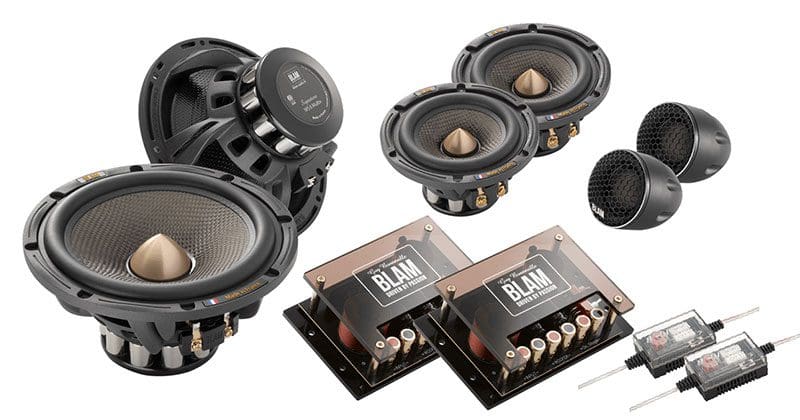
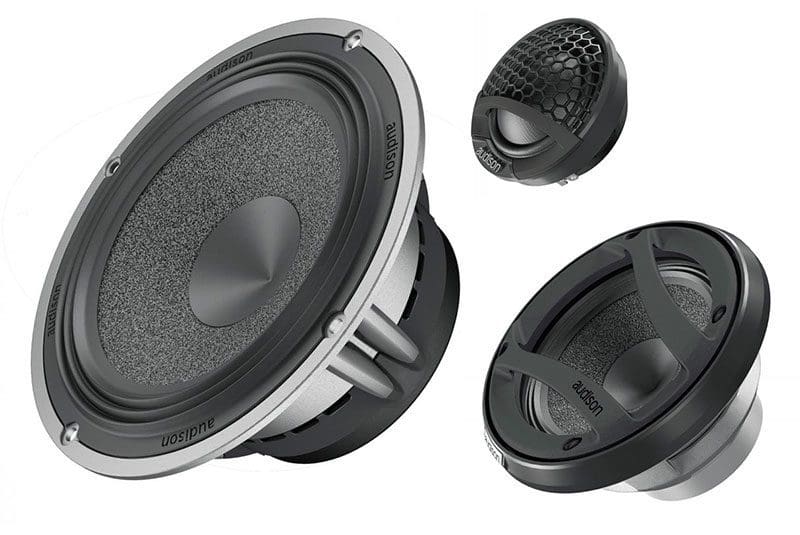
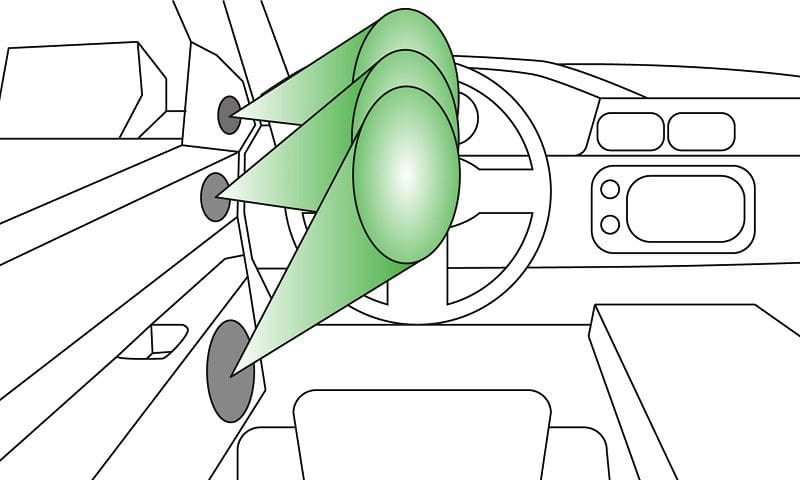

Leave a Reply